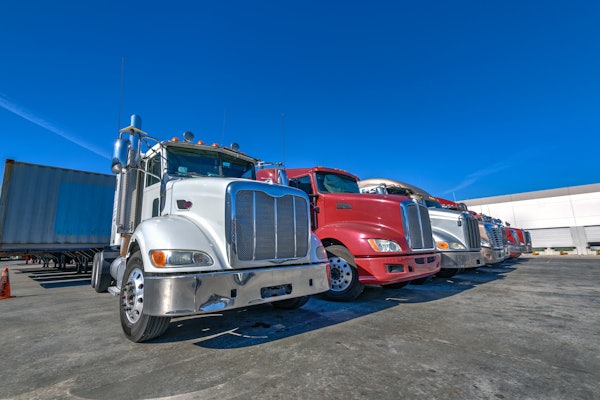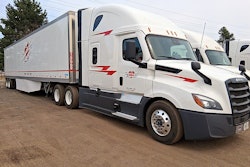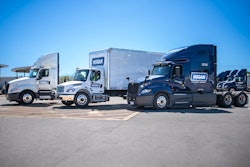As you’ll read in this month’s Equipment report on page 18, the Truck Manufacturers Association (TMA) and a handful of truck OEMs, with co-funding by the U.S. Department of Energy, recently showed the results of research into tractor and trailer aerodynamics, which, they say, could save an estimated 1 billion gallons of fuel annually.
As my Brit friends would say, “Good show!”
But it’s really more of a good start.
Truck operators need to keep in mind that aerodynamics are only part of the better-mpg equation. Smart spec’ing, good driver habits and proper maintenance can help round out the picture. For example:
Spec’ing
- Spec’ing using the gear-fast, run-slow concept has been shown to improve fuel economy markedly. When the powertrain is spec’d for a high top speed, but the vehicle is limited to a lower speed, the engine runs in a more efficient, lower-rpm range.
- Spec’ing rib-tread drive-axle tires instead of lug tread, advises the Technology & Maintenance Council, can improve mpg 2 to 4 percent, while using ribs on the drive axles and shallow ribs on the trailer can brighten the picture from 6 to 14 percent.
Driver factors
- Discourage idling, which can use a half gallon or so of fuel per hour, all for no miles. To learn more about anti-idling systems, read this month’s Equipment In Focus report on page 22.
- Keep speeds reasonable – and legal. There’s an estimated 2 percent drop in fuel economy for every 1 mph over 65.
- Encourage the use of cruise control. A steady vehicle speed, according to TMC, can contribute up to a 6 percent fuel economy improvement.
Maintenance
- Tires can contribute, through rolling resistance, as much as 35 percent to level-road fuel consumption, but improper inflation pressure can increase that loss. A soft tire deforms to a greater degree as it rolls against the road, so more energy is used bending the tire’s belts and flexing its sidewalls. That’s energy that could be put to better use. Gross underinflation is estimated to cost between 3 and 5 percent in terms of fuel economy.
- Proper wheel alignment also is a factor. When the wheels on a vehicle all don’t agree on which direction to travel, they fight each other, removing a little rubber with every revolution. Fuel economy suffers because it takes extra energy to erase tire tread.
- Using higher-viscosity lubes than necessary makes it harder for pumps and gears to move. That consumes more energy than necessary, and wastes a small amount of fuel. Use only recommended grades.
- A dirty air filter can deprive an engine of the air it needs for optimum combustion, and can result in less efficient operation, thus using more fuel than necessary. Always replace according to gauged restriction, and not by eyeballing them.
- Fan clutches and compressors that aren’t in good working order may run more than is necessary for them to do their jobs. Excess power will be sapped instead of helping to move the truck.
- If you use aerodynamic devices, keep them in good repair. If parts are broken or missing, you’re not getting the aerodynamic benefit you paid for, and – depending on the type and extent of the damage – you could be creating more drag than if the devices never had been purchased. The same is true of standard body panels, such as fenders and hoods.
Believe me, I’m not minimizing the significance of TMA’s findings, or future advances in tractor-trailer equipment and configurations. All I’m saying is that there are steps that can be taken right now, by anyone, to squeeze as many miles as possible out of every gallon of fuel.







